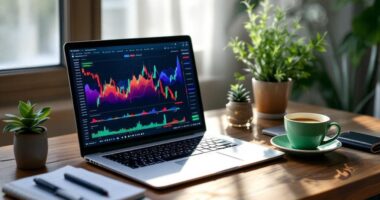Why struggle with complex trading strategies and sleepless nights monitoring markets when AI trading bots are making algorithmic trading more accessible than ever before?
Platforms like Pionex, Tickeron, and WunderTrading have transformed what was once the domain of Wall Street quants into something the average person can utilize with minimal setup.
These user-friendly platforms offer pre-built strategies that require no coding knowledge—like having a professional chef prepare meal kits where you just need to turn on the stove.
Today’s trading platforms deliver Wall Street algorithms as conveniently as meal kits—just heat and serve.
Connect your brokerage account, adjust a few parameters, and you’re effectively in business.
Many platforms even include paper trading features so you can test strategies with Monopoly money before risking real cash.
Risk management remains vital, however.
Trading bots offer stop-loss settings and position sizing tools, but they’re not magic money printers.
They’re more like overeager puppies—enthusiastic but requiring supervision.
Without proper oversight, users risk significant drawdowns if they allocate all assets to automated systems.
Remember: backtesting tools are your friend, showing how strategies might have performed during previous market conditions.
The learning curve has been greatly flattened through copy trading options and demo accounts.
Users can mirror experienced traders’ strategies or practice with virtual funds, much like learning to drive in a simulator before hitting the highway.
Setting up price swing alerts can significantly enhance your bot’s performance by identifying optimal entry and exit points.
Intuitive dashboards provide clear analytics that help users understand bot performance over time.
A major advantage is market coverage—bots can simultaneously trade across stocks, crypto, and forex without requiring expertise in every asset class.
They continue executing strategies even when you’re offline, catching opportunities while you sleep.
Most connect via secure APIs that limit bots to trading functions only, not withdrawals.
While accessibility has improved dramatically, success still requires research and monitoring.
Today’s AI systems handle over 70% of global trading volume, demonstrating their dominance in modern markets.
The best approach combines automation’s efficiency with human oversight—like cruise control on your car.
It handles the tedious parts, but you still need to watch the road.
These trading systems can continuously adapt to shifting market conditions without requiring manual intervention, making them particularly valuable during volatile periods.









